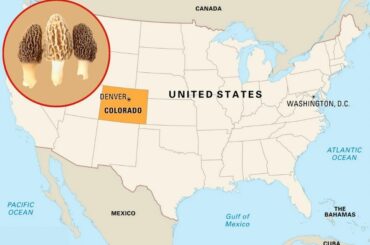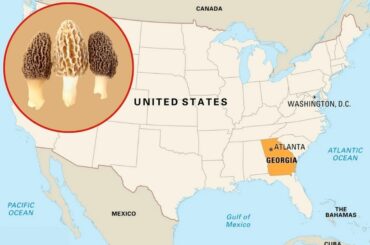Mushrooms are a delicious and nutritious addition to any meal, but they can quickly become dangerous when they’re allowed to grow mold. Eating moldy mushrooms can have serious health consequences, including allergic reactions, gastrointestinal issues, respiratory problems, and neurological symptoms.
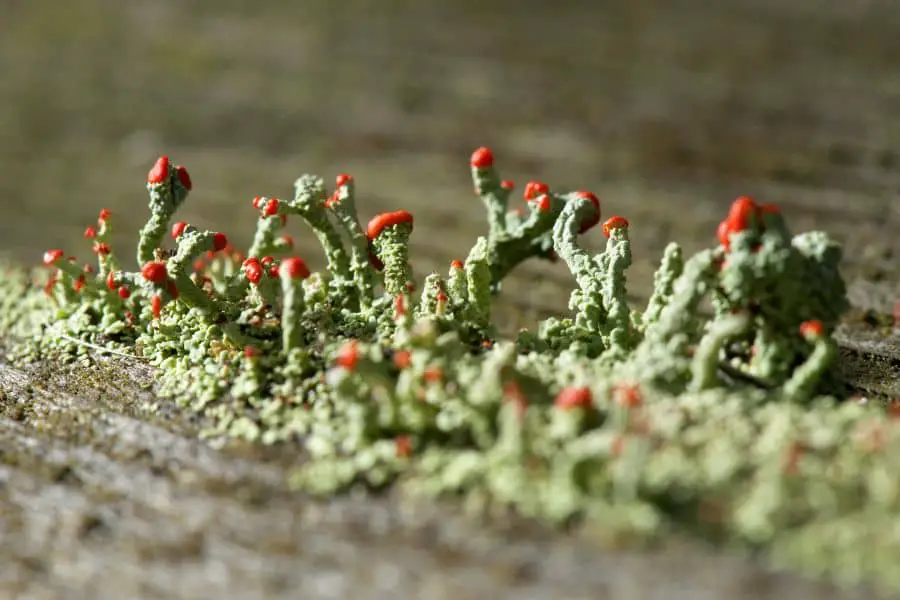
It’s important to understand the risks associated with consuming moldy mushrooms and take appropriate steps to prevent mold growth in your mushroom supply. In this article, we’ll explore the different types of mold found in mushrooms, the potential health risks of consuming moldy mushrooms, and what you can do to keep your mushrooms safe and healthy.
Key Takeaways: Moldy mushrooms should be avoided to minimize the risk of exposure to mycotoxins. Any type of mold can potentially produce mycotoxins, and cooking may not eliminate all toxins. Symptoms of mold toxicity can vary in severity and can affect different systems of the body. Individual susceptibility, quantity of mold consumed, type of mold consumed, and preparation methods can all influence the effects of moldy mushrooms.
Mycotoxins and Health Risks
Contents
Mycotoxins are toxic substances produced by certain types of mold that can grow on food, including mushrooms. When these mycotoxins are consumed, they can cause a range of health problems, from mild irritation to severe illness. Some of the most common mycotoxins found in mushrooms include aflatoxins, ochratoxins, and patulin.
Aflatoxins are a type of mycotoxin produced by Aspergillus fungi, which can grow on a variety of food products, including peanuts, corn, and cottonseed. Aflatoxins are known to cause liver damage and have been linked to the development of liver cancer.
Ochratoxins are another type of mycotoxin that can be found in mushrooms. These toxins are produced by Aspergillus and Penicillium fungi and can lead to kidney damage and cancer.
Patulin is a mycotoxin produced by certain types of Penicillium and Aspergillus fungi. It has been shown to be toxic to human cells and can cause gastrointestinal distress, including nausea and vomiting.
The health risks associated with mycotoxins vary depending on the type of mycotoxin consumed, the amount consumed, and the individual’s susceptibility to mycotoxin toxicity. In some cases, mycotoxins can cause acute illness, while in others, repeated exposure to low levels of mycotoxins over time can lead to chronic health problems.
To protect yourself from the potential health risks associated with mycotoxins, it’s important to store your mushrooms properly and avoid consuming mushrooms that have visible signs of mold growth. Additionally, cooking mushrooms thoroughly can help to reduce the risk of mycotoxin exposure.
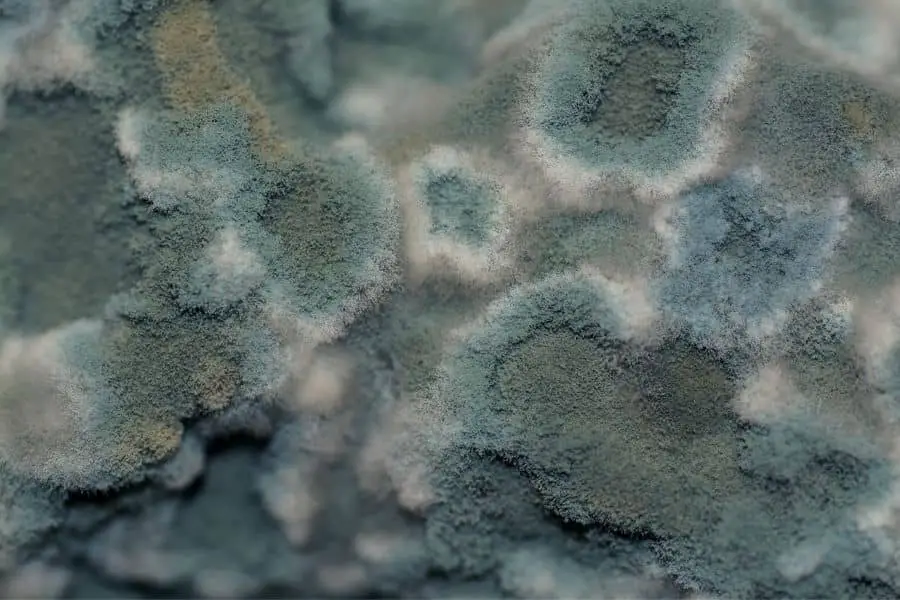
Allergic reactions
Some individuals may be allergic to the molds that grow on mushrooms, which can lead to allergic reactions when consuming moldy mushrooms. These allergic reactions can range from mild to severe and can include symptoms such as itching, hives, nasal congestion, and difficulty breathing.
In some cases, the allergic reaction may be caused by the mycotoxins produced by the mold rather than the mold itself. For example, the mycotoxin patulin produced by some molds can cause an allergic reaction that presents as hives and itching.
It’s important to note that allergic reactions to mushrooms are relatively uncommon, and most people can consume mushrooms without any adverse effects. However, if you experience any symptoms of an allergic reaction after consuming mushrooms, it’s important to seek medical attention immediately.
If you’re concerned about the risk of allergic reactions to mushrooms, it’s best to start by consuming small amounts of mushrooms and monitoring your body’s response. Additionally, if you have a known allergy to mold or other types of fungi, it’s best to avoid consuming mushrooms altogether.
To prevent allergic reactions caused by moldy mushrooms, it’s important to store your mushrooms properly and avoid consuming mushrooms that have visible signs of mold growth. Additionally, washing your mushrooms thoroughly before consumption can help to remove any potential allergens.
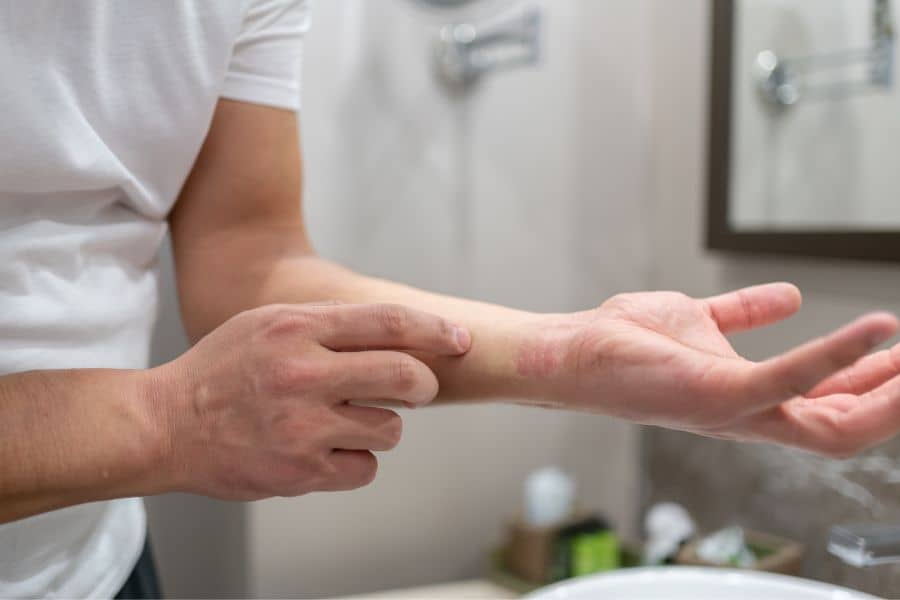
Gastrointestinal issues
Consuming moldy mushrooms can lead to a range of gastrointestinal issues, including nausea, vomiting, diarrhea, and stomach pain. These symptoms can occur when the mycotoxins produced by the mold irritate the lining of the stomach and intestines.
In some cases, the gastrointestinal issues caused by consuming moldy mushrooms can be severe and lead to dehydration and electrolyte imbalances. Individuals who are more susceptible to these issues, such as those with weakened immune systems or underlying medical conditions, may be at a higher risk of experiencing severe symptoms.
To prevent gastrointestinal issues caused by moldy mushrooms, it’s important to store your mushrooms properly and avoid consuming mushrooms that have visible signs of mold growth. Additionally, cooking mushrooms thoroughly can help to reduce the risk of mycotoxin exposure and prevent gastrointestinal issues.
If you experience any symptoms of gastrointestinal distress after consuming mushrooms, it’s important to stay hydrated and seek medical attention if your symptoms persist or worsen. In severe cases, hospitalization may be necessary to manage symptoms and prevent further complications.

Respiratory issues
Inhaling the spores produced by moldy mushrooms can lead to respiratory issues, particularly for individuals with pre-existing respiratory conditions such as asthma or chronic obstructive pulmonary disease (COPD). Symptoms of respiratory issues caused by moldy mushrooms may include coughing, wheezing, chest tightness, and difficulty breathing.
In severe cases, exposure to moldy mushrooms can even lead to the development of fungal infections in the lungs, which can be life-threatening. Individuals who are more susceptible to these infections, such as those with weakened immune systems or underlying medical conditions, may be at a higher risk of experiencing severe respiratory symptoms.
To prevent respiratory issues caused by moldy mushrooms, it’s important to store your mushrooms properly and avoid consuming mushrooms that have visible signs of mold growth. Additionally, it’s important to handle and prepare mushrooms carefully to minimize the release of spores into the air.
If you experience any symptoms of respiratory distress after consuming mushrooms or inhaling mushroom spores, it’s important to seek medical attention immediately. Treatment may involve medications to manage symptoms, such as bronchodilators or corticosteroids, or in severe cases, hospitalization to manage complications and prevent further damage to the lungs.
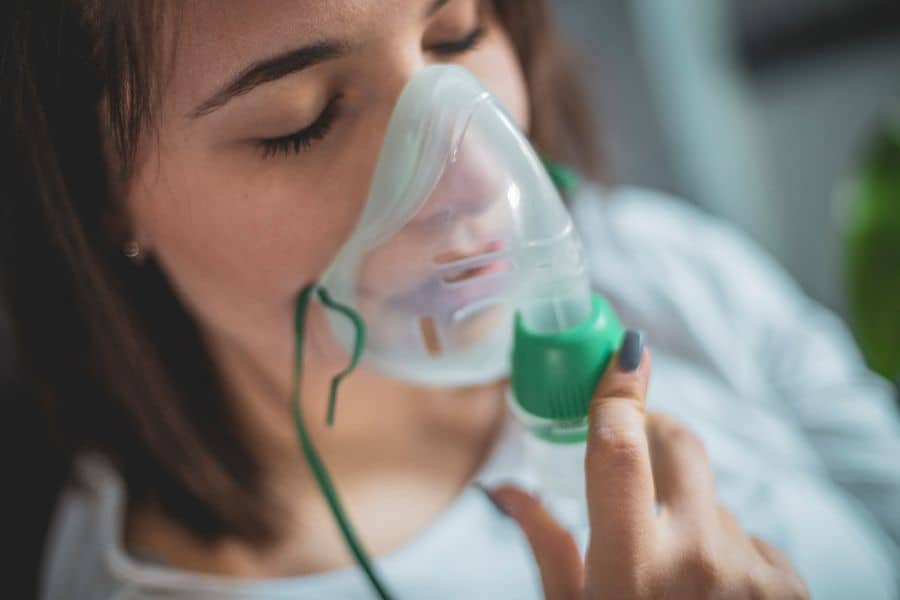
Neurological Issues
Consuming moldy mushrooms can lead to neurological issues, particularly when the mycotoxins produced by the mold enter the bloodstream and travel to the brain. Symptoms of neurological issues caused by moldy mushrooms may include headaches, dizziness, confusion, and seizures.
In some cases, exposure to high levels of mycotoxins can even lead to long-term neurological damage, such as cognitive impairment, memory loss, or even Parkinson’s disease. Individuals who are more susceptible to these issues, such as those with weakened immune systems or underlying medical conditions, may be at a higher risk of experiencing severe neurological symptoms.
To prevent neurological issues caused by moldy mushrooms, it’s important to store your mushrooms properly and avoid consuming mushrooms that have visible signs of mold growth. Additionally, cooking mushrooms thoroughly can help to reduce the risk of mycotoxin exposure and prevent neurological issues.
If you experience any symptoms of neurological distress after consuming mushrooms, it’s important to seek medical attention immediately. Treatment may involve medications to manage symptoms or prevent further damage, as well as lifestyle changes to promote brain health and prevent long-term neurological damage.

Long-Term Health Effects
Consuming moldy mushrooms can have long-term health effects, particularly when exposure to mycotoxins is repeated or prolonged. These effects may include chronic respiratory issues, neurological damage, and even cancer.
In some cases, exposure to mycotoxins over a long period of time can lead to the development of cancer, particularly liver and kidney cancer. Additionally, repeated exposure to mycotoxins can lead to chronic respiratory issues and neurological damage, such as cognitive impairment and memory loss.
Individuals who are more susceptible to long-term health effects from consuming moldy mushrooms, such as those with weakened immune systems or underlying medical conditions, may be at a higher risk of experiencing severe and long-lasting health effects.
To prevent long-term health effects caused by moldy mushrooms, it’s important to store your mushrooms properly and avoid consuming mushrooms that have visible signs of mold growth. Additionally, it’s important to handle and prepare mushrooms carefully to minimize the release of spores and mycotoxins.
If you have a history of consuming moldy mushrooms or are experiencing symptoms that may be related to mycotoxin exposure, it’s important to speak with your healthcare provider about your risk for long-term health effects. Your healthcare provider may recommend diagnostic testing, lifestyle changes, or other interventions to manage your risk and prevent further damage to your health
Factors that Influence the Effects of Eating Moldy Mushrooms
Individual susceptibility: The effects of consuming moldy mushrooms can vary widely depending on individual susceptibility. Factors such as age, overall health, and underlying medical conditions can all affect an individual’s susceptibility to the effects of mold exposure. Individuals with weakened immune systems or respiratory issues may be at a higher risk of experiencing severe symptoms from consuming moldy mushrooms.
Quantity of mold consumed: The quantity of mold consumed can also play a role in the severity of symptoms. Consuming a small amount of mold may not result in significant symptoms, while consuming a large quantity of mold can result in severe symptoms, particularly if the mold contains high levels of mycotoxins.
Type of mold consumed: Different types of mold can produce different types and levels of mycotoxins, which can affect the severity and type of symptoms experienced. For example, some types of mold may produce mycotoxins that primarily affect the respiratory system, while others may affect the gastrointestinal system or the nervous system.
Preparation and cooking methods: The preparation and cooking methods used for mushrooms can also affect the level of mycotoxins present and the severity of symptoms experienced. Cooking mushrooms thoroughly can help to reduce the level of mycotoxins present, while consuming raw or undercooked mushrooms can increase the risk of mycotoxin exposure.
Frequently asked questions
What are symptoms of mold toxicity?
Mold toxicity can cause a range of symptoms, which can vary in severity depending on the individual’s level of exposure and sensitivity to mold. Common symptoms of mold toxicity may include:
- Respiratory issues, such as coughing, wheezing, or shortness of breath
- Allergic reactions, including runny nose, itchy eyes, and skin rash
- Gastrointestinal issues, such as nausea, vomiting, and diarrhea
- Neurological symptoms, including headaches, dizziness, confusion, and seizures
The severity of symptoms can vary widely depending on factors such as the amount of mold exposure, the duration of exposure, and the individual’s underlying health status. In some cases, mold toxicity can cause severe symptoms that require immediate medical attention, such as difficulty breathing or loss of consciousness.
It’s important to pay attention to any symptoms that may be related to mold toxicity, particularly if you have a history of exposure to mold or live in an area with high levels of mold growth. Symptoms may develop gradually over time or appear suddenly after exposure to a particularly high concentration of mold spores.
Common Misconceptions About Moldy Mushrooms
Myth: Cooking moldy mushrooms kills the toxins.
Fact: While cooking can help to reduce the level of mold and mycotoxins present in mushrooms, it does not necessarily eliminate all toxins. Some mycotoxins can be heat-resistant and may not be completely destroyed through cooking. It’s best to avoid consuming moldy mushrooms altogether to minimize the risk of exposure to mycotoxins.
Myth: Only certain types of mold are toxic.
Fact: While some types of mold are more commonly associated with mycotoxin production than others, any type of mold can potentially produce mycotoxins. It’s difficult to visually distinguish between toxic and non-toxic molds, so it’s best to avoid consuming any mushrooms that show signs of mold growth.
Myth: If it smells okay, it’s safe to eat.
Fact: The presence of mold and mycotoxins in mushrooms cannot always be detected by smell alone. Some mycotoxins are odorless, and mushrooms may still contain harmful levels of mycotoxins even if they appear and smell fine. It’s important to visually inspect mushrooms for signs of mold growth and to avoid consuming any mushrooms that show signs of mold growth.
What should I do if I accidentally eat moldy mushrooms?
If you accidentally consume moldy mushrooms and begin to experience symptoms of mold toxicity, seek medical attention immediately. Symptoms can vary in severity and can affect different systems of the body.
Can I cut off the mold and still eat the mushroom?
It is not recommended to cut off the mold and still eat the mushroom. Even if the mold is not visible, it may have already spread throughout the mushroom and produced mycotoxins.
How can I tell if my mushrooms are moldy?
To check for mold growth on mushrooms, inspect them carefully for any signs of discoloration, fuzzy or slimy patches, or a musty odor. If you notice any of these signs, discard the mushrooms.
Is it safe to eat mushrooms that have white spots on them?
White spots on mushrooms may indicate a benign fungus growth, but it’s best to err on the side of caution and avoid eating them. When in doubt, throw them out.
Can I still use mushrooms that have started to wilt?
Mushrooms that have started to wilt are not necessarily moldy, but they may be past their prime and have lost some of their nutritional value. It’s best to use fresh mushrooms for optimal flavor and health benefits.
Conclusion
In conclusion, consuming moldy mushrooms can have serious health risks due to the presence of mycotoxins. These toxins can cause a range of symptoms, including allergic reactions, gastrointestinal issues, respiratory problems, neurological issues, and more. In some cases, exposure to mycotoxins from moldy mushrooms can lead to long-term health effects.

